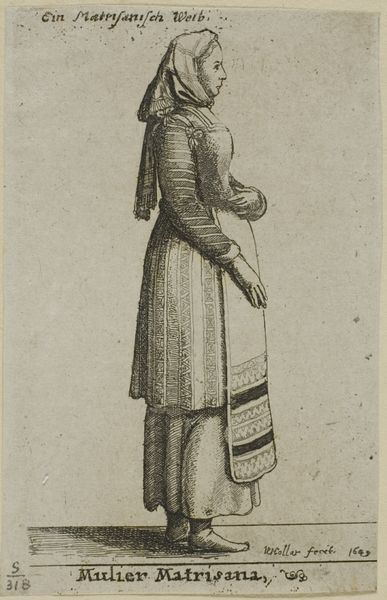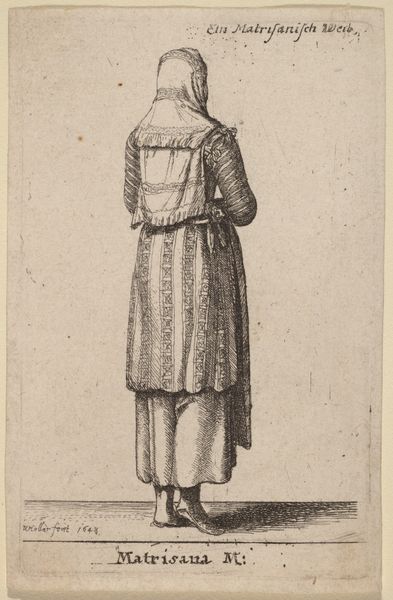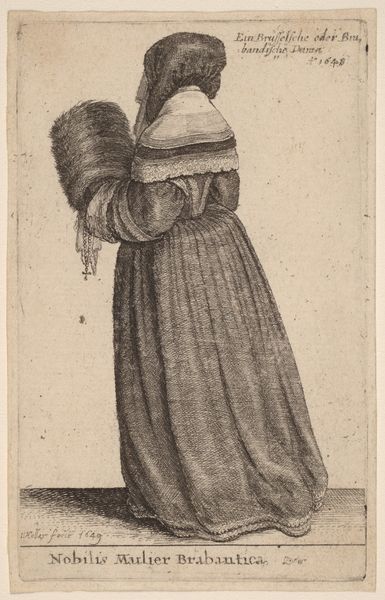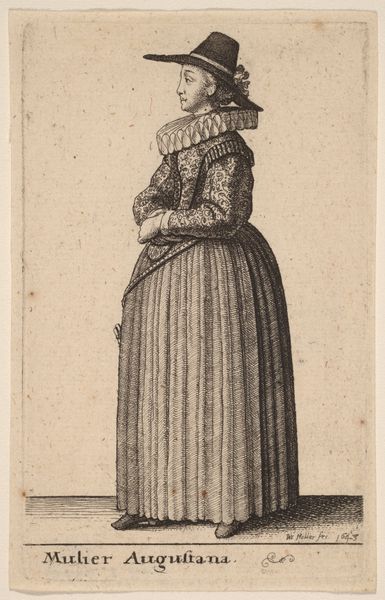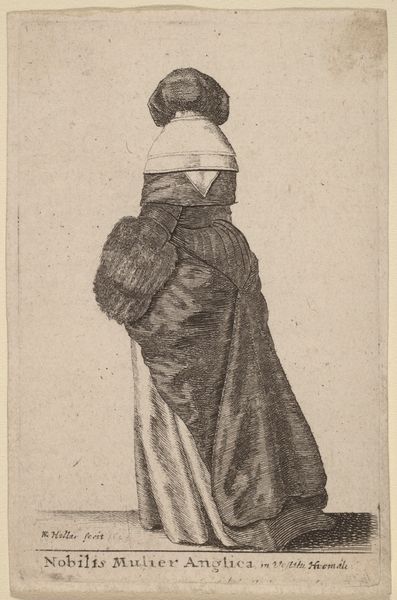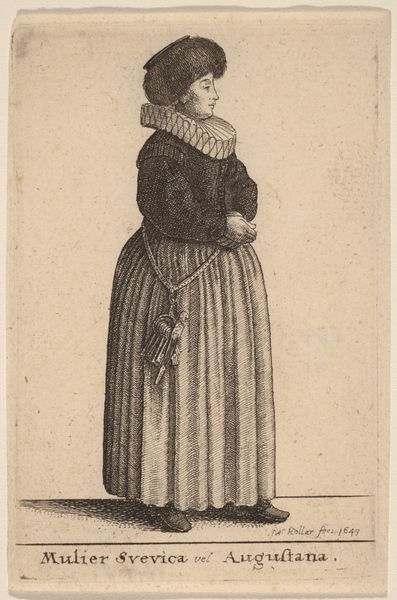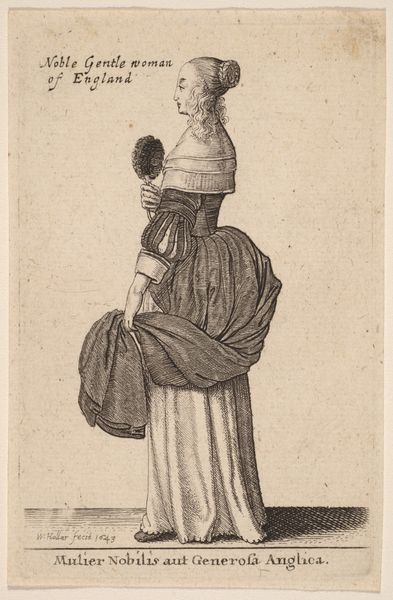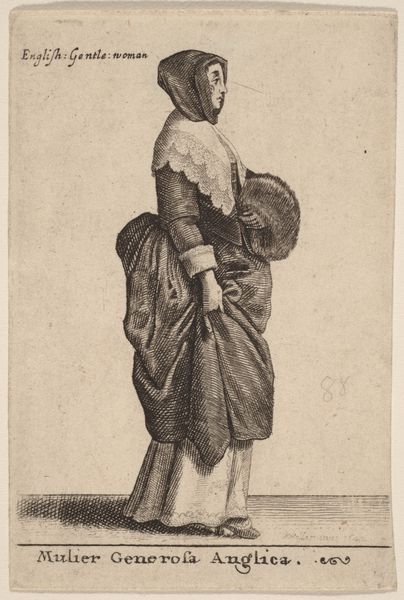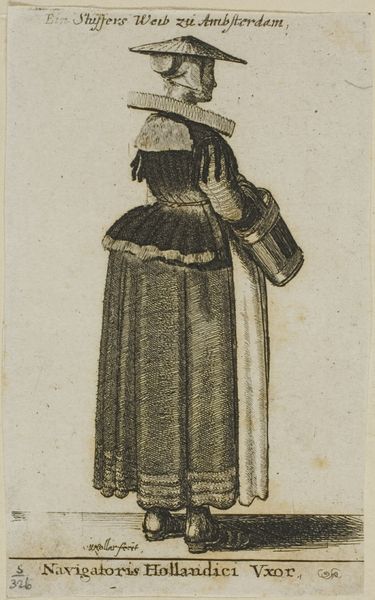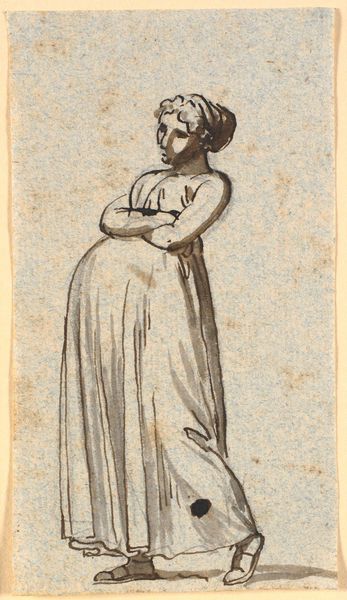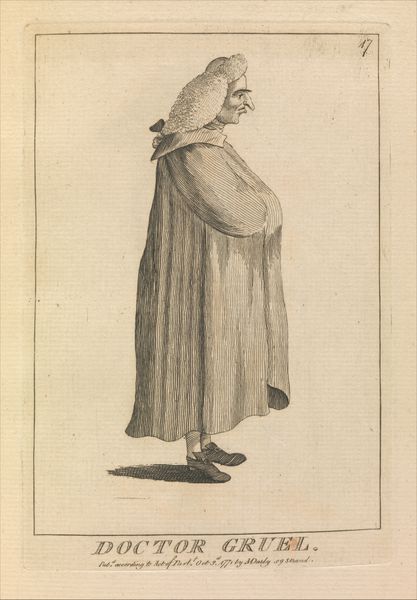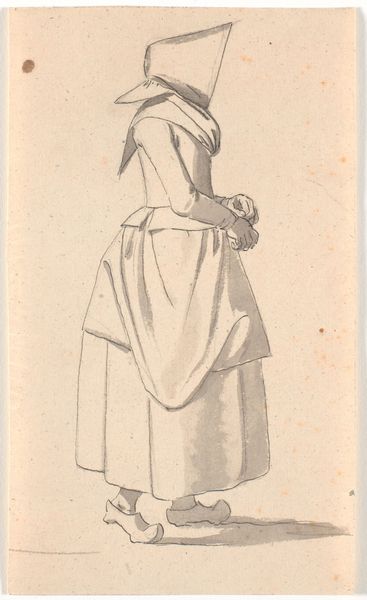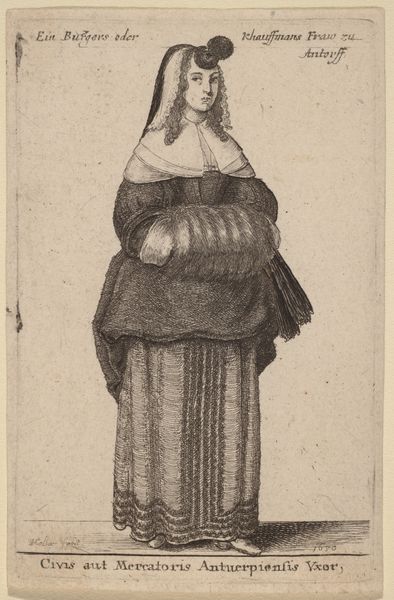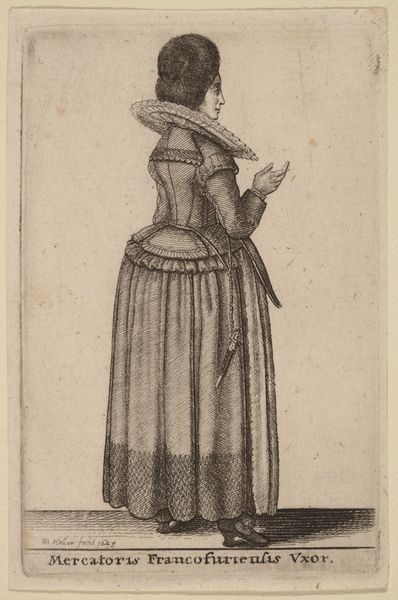
print, engraving
#
portrait
#
baroque
# print
#
history-painting
#
engraving
Copyright: National Gallery of Art: CC0 1.0
This is "Civis Londinensis Vxor," made by Wenceslaus Hollar in 1643 using etching, a printmaking technique. The process involves covering a metal plate with a waxy, acid-resistant ground. The artist then draws through this ground, exposing the metal. When the plate is submerged in acid, the drawn lines are "etched" into the metal. Ink is then applied to the plate, and the surface wiped clean, leaving ink only in the etched lines. Finally, the plate is pressed onto paper, transferring the image. The fineness of the lines, and the tonal variation achieved reflect Hollar’s skill. But, it is also worth considering the purpose of the print. This wasn’t fine art in the modern sense, but a means of circulating images and information widely. Inexpensive prints like this played a crucial role in the 17th century, fostering a shared visual culture and influencing perceptions of class, labor, and everyday life. They collapse any assumptions we might have about art and craft being separate.
Comments
No comments
Be the first to comment and join the conversation on the ultimate creative platform.
